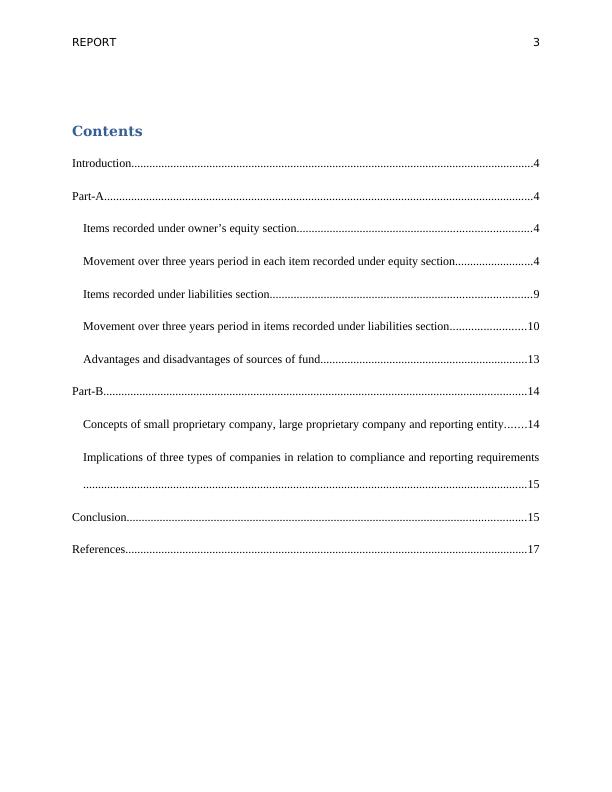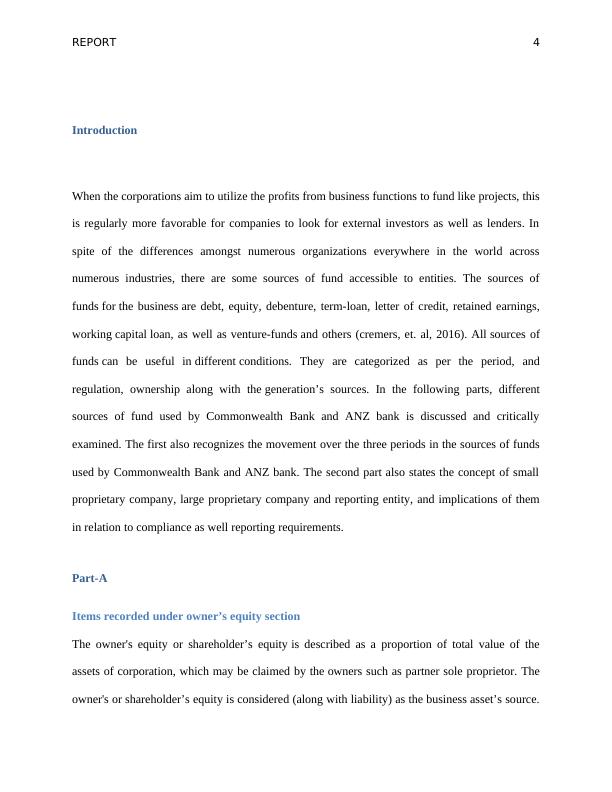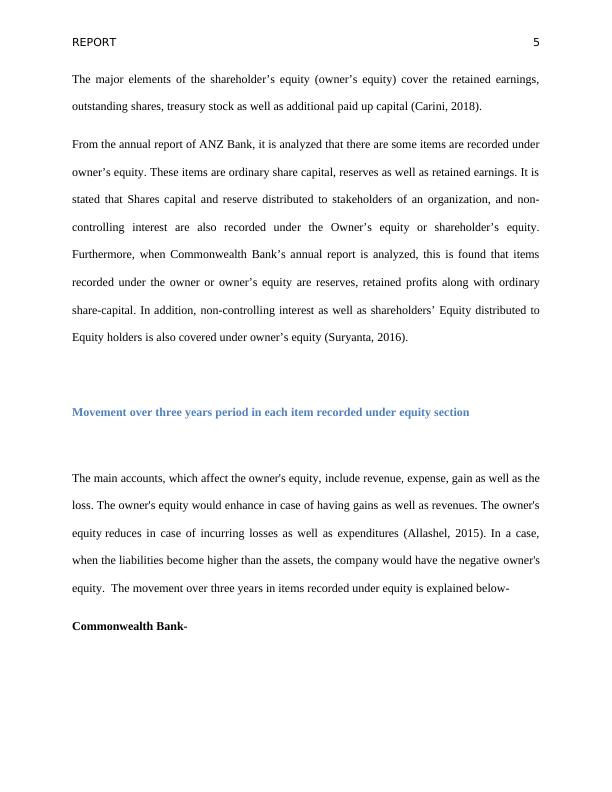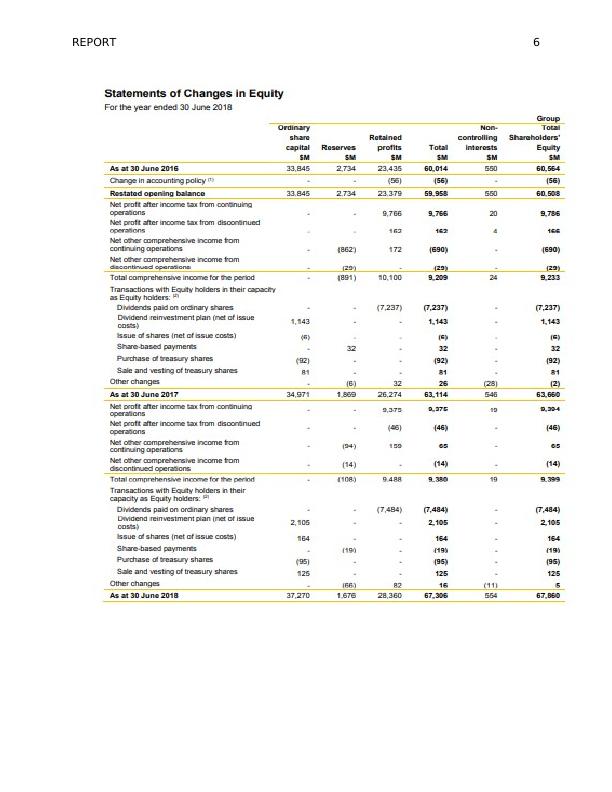Sourcing Funds
Added on 2022-10-17
21 Pages3548 Words244 Views
Running head: REPORT 1
Corporate and Financial accounting
Student details:
9/24/2019
Corporate and Financial accounting
Student details:
9/24/2019

REPORT 2
Abstract
It is required by the companies to raise the capital funds or external funds, for expanding the
businesses in new marketplaces or places, for investing in research as well as development, or
for fending off competition. Sourcing money can be made for the various reasons. The
conventional fields of the requirement can be for capital asset gaining - new machineries or a
creation of a new buildings and depots. Production of new products may be extremely costly as
well as here again capital can be needed. Usually, this development is funded internally, where
the capital for acquirement of machineries can come from external resources. In recent as well as
age of tight liquidity, various entities have searched the short term capital in a manner of
overdrafts and loans for rendering the cash flow cushion. The rate of interest may differ from
company to company and also as per the purposes. The following parts discuss significance and
drawback of the sources of funds, concept of large and small proprietary companies and concept
of reporting entity.
Abstract
It is required by the companies to raise the capital funds or external funds, for expanding the
businesses in new marketplaces or places, for investing in research as well as development, or
for fending off competition. Sourcing money can be made for the various reasons. The
conventional fields of the requirement can be for capital asset gaining - new machineries or a
creation of a new buildings and depots. Production of new products may be extremely costly as
well as here again capital can be needed. Usually, this development is funded internally, where
the capital for acquirement of machineries can come from external resources. In recent as well as
age of tight liquidity, various entities have searched the short term capital in a manner of
overdrafts and loans for rendering the cash flow cushion. The rate of interest may differ from
company to company and also as per the purposes. The following parts discuss significance and
drawback of the sources of funds, concept of large and small proprietary companies and concept
of reporting entity.

REPORT 3
Contents
Introduction......................................................................................................................................4
Part-A...............................................................................................................................................4
Items recorded under owner’s equity section..............................................................................4
Movement over three years period in each item recorded under equity section..........................4
Items recorded under liabilities section.......................................................................................9
Movement over three years period in items recorded under liabilities section.........................10
Advantages and disadvantages of sources of fund.....................................................................13
Part-B.............................................................................................................................................14
Concepts of small proprietary company, large proprietary company and reporting entity.......14
Implications of three types of companies in relation to compliance and reporting requirements
....................................................................................................................................................15
Conclusion.....................................................................................................................................15
References......................................................................................................................................17
Contents
Introduction......................................................................................................................................4
Part-A...............................................................................................................................................4
Items recorded under owner’s equity section..............................................................................4
Movement over three years period in each item recorded under equity section..........................4
Items recorded under liabilities section.......................................................................................9
Movement over three years period in items recorded under liabilities section.........................10
Advantages and disadvantages of sources of fund.....................................................................13
Part-B.............................................................................................................................................14
Concepts of small proprietary company, large proprietary company and reporting entity.......14
Implications of three types of companies in relation to compliance and reporting requirements
....................................................................................................................................................15
Conclusion.....................................................................................................................................15
References......................................................................................................................................17

REPORT 4
Introduction
When the corporations aim to utilize the profits from business functions to fund like projects, this
is regularly more favorable for companies to look for external investors as well as lenders. In
spite of the differences amongst numerous organizations everywhere in the world across
numerous industries, there are some sources of fund accessible to entities. The sources of
funds for the business are debt, equity, debenture, term-loan, letter of credit, retained earnings,
working capital loan, as well as venture-funds and others (cremers, et. al, 2016). All sources of
funds can be useful in different conditions. They are categorized as per the period, and
regulation, ownership along with the generation’s sources. In the following parts, different
sources of fund used by Commonwealth Bank and ANZ bank is discussed and critically
examined. The first also recognizes the movement over the three periods in the sources of funds
used by Commonwealth Bank and ANZ bank. The second part also states the concept of small
proprietary company, large proprietary company and reporting entity, and implications of them
in relation to compliance as well reporting requirements.
Part-A
Items recorded under owner’s equity section
The owner's equity or shareholder’s equity is described as a proportion of total value of the
assets of corporation, which may be claimed by the owners such as partner sole proprietor. The
owner's or shareholder’s equity is considered (along with liability) as the business asset’s source.
Introduction
When the corporations aim to utilize the profits from business functions to fund like projects, this
is regularly more favorable for companies to look for external investors as well as lenders. In
spite of the differences amongst numerous organizations everywhere in the world across
numerous industries, there are some sources of fund accessible to entities. The sources of
funds for the business are debt, equity, debenture, term-loan, letter of credit, retained earnings,
working capital loan, as well as venture-funds and others (cremers, et. al, 2016). All sources of
funds can be useful in different conditions. They are categorized as per the period, and
regulation, ownership along with the generation’s sources. In the following parts, different
sources of fund used by Commonwealth Bank and ANZ bank is discussed and critically
examined. The first also recognizes the movement over the three periods in the sources of funds
used by Commonwealth Bank and ANZ bank. The second part also states the concept of small
proprietary company, large proprietary company and reporting entity, and implications of them
in relation to compliance as well reporting requirements.
Part-A
Items recorded under owner’s equity section
The owner's equity or shareholder’s equity is described as a proportion of total value of the
assets of corporation, which may be claimed by the owners such as partner sole proprietor. The
owner's or shareholder’s equity is considered (along with liability) as the business asset’s source.

REPORT 5
The major elements of the shareholder’s equity (owner’s equity) cover the retained earnings,
outstanding shares, treasury stock as well as additional paid up capital (Carini, 2018).
From the annual report of ANZ Bank, it is analyzed that there are some items are recorded under
owner’s equity. These items are ordinary share capital, reserves as well as retained earnings. It is
stated that Shares capital and reserve distributed to stakeholders of an organization, and non-
controlling interest are also recorded under the Owner’s equity or shareholder’s equity.
Furthermore, when Commonwealth Bank’s annual report is analyzed, this is found that items
recorded under the owner or owner’s equity are reserves, retained profits along with ordinary
share-capital. In addition, non-controlling interest as well as shareholders’ Equity distributed to
Equity holders is also covered under owner’s equity (Suryanta, 2016).
Movement over three years period in each item recorded under equity section
The main accounts, which affect the owner's equity, include revenue, expense, gain as well as the
loss. The owner's equity would enhance in case of having gains as well as revenues. The owner's
equity reduces in case of incurring losses as well as expenditures (Allashel, 2015). In a case,
when the liabilities become higher than the assets, the company would have the negative owner's
equity. The movement over three years in items recorded under equity is explained below-
Commonwealth Bank-
The major elements of the shareholder’s equity (owner’s equity) cover the retained earnings,
outstanding shares, treasury stock as well as additional paid up capital (Carini, 2018).
From the annual report of ANZ Bank, it is analyzed that there are some items are recorded under
owner’s equity. These items are ordinary share capital, reserves as well as retained earnings. It is
stated that Shares capital and reserve distributed to stakeholders of an organization, and non-
controlling interest are also recorded under the Owner’s equity or shareholder’s equity.
Furthermore, when Commonwealth Bank’s annual report is analyzed, this is found that items
recorded under the owner or owner’s equity are reserves, retained profits along with ordinary
share-capital. In addition, non-controlling interest as well as shareholders’ Equity distributed to
Equity holders is also covered under owner’s equity (Suryanta, 2016).
Movement over three years period in each item recorded under equity section
The main accounts, which affect the owner's equity, include revenue, expense, gain as well as the
loss. The owner's equity would enhance in case of having gains as well as revenues. The owner's
equity reduces in case of incurring losses as well as expenditures (Allashel, 2015). In a case,
when the liabilities become higher than the assets, the company would have the negative owner's
equity. The movement over three years in items recorded under equity is explained below-
Commonwealth Bank-

REPORT 6

End of preview
Want to access all the pages? Upload your documents or become a member.
Related Documents
HA2032 Corporate and Financial Accounting Report 2022lg...
|15
|4085
|21
Corporate & Financial Accounting Assignmentlg...
|15
|3652
|35
Corporate Accounting Report 2022lg...
|16
|2922
|16
Corporate Accounting Report 2022lg...
|15
|2851
|12
Equity and Liabilities Analysis of Commonwealth Bank and Bank of Queenslandlg...
|10
|2402
|181
Corporate and Financial Accounting 2022 Reportlg...
|17
|3557
|9